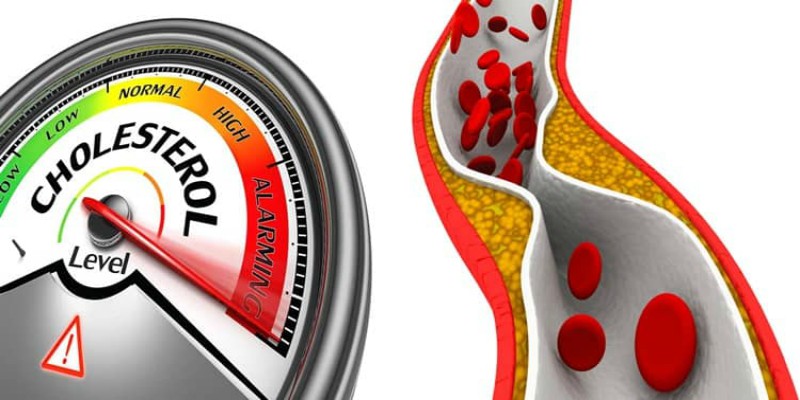Cholesterol is really an over-rated word. High levels of HDL cholesterol – often called “good” cholesterol – are associated with a reduced risk of Coronary heart diseases. It appears that HDL particles “scour” the walls of blood vessels, cleaning out excess cholesterol that otherwise might have been used to make the plaques that cause CAD. The HDL cholesterol is then carried to the liver, where it is processed into bile, and secreted into the intestines and out of the body. So, when we measure a person’s HDL cholesterol level, we seem to be measuring how vigorously his or her blood vessels are being “scrubbed” free of cholesterol. One great way to protect your heart is to increase the good HDL cholesterol and increase LDL cholesterol.
Always remember that HDL levels below 40 mg/dL are associated with an increased risk of Coronary heart diseases. Even in people whose total cholesterol and LDL cholesterol levels are normal. HDL levels between 40 and 60 mg/dL are considered “normal,” and do not very much affect the risk of CAD one way or the other. However, HDL levels greater than 60 mg/dL are
Fortunately, it is still true that there are several things we can all do to increase our HDL levels in a healthy way, and in a way that does appear to benefit our risk of heart disease.
How can We Increase Our HDL Levels?
Aerobic exercise: Many people don’t like to hear it, but regular aerobic exercise (any exercise, such as walking, jogging or bike riding, that raises your heart rate for 20 to 30 minutes at a time) may be the most effective way to increase HDL levels. The duration of the exercise is more important.
Lose weight: Obesity results not only in increased LDL cholesterol but also in reduced HDL cholesterol. If you are overweight, reducing your weight should increase your HDL levels. This is especially important if your excess weight is stored in your abdominal area.
Stop smoking: If you smoke, giving up tobacco will result in an increase in HDL levels. (This is the only advantage I can think of that smokers have over non-smokers — it gives them something else to do that will raise their HDL.)
Cut out the trans fatty acids: Trans fatty acids are currently present in many of your favorite prepared foods — anything in which the nutrition label reads “partially hydrogenated vegetable oils” — so eliminating them from the diet is not a trivial task. But trans fatty acids not only increase LDL cholesterol levels, but they also reduce HDL cholesterol levels. Removing them from your diet will almost certainly result in a measurable increase in HDL levels. such problems even when limiting their alcohol intake to one or two drinks per day. Here’s more on alcohol and the heart.
Increase the monounsaturated fats in your diet: Monounsaturated fats such as coconut oil. Til oil, olive oil and in the fats found in peanut butter can increase HDL cholesterol levels without increasing the total cholesterol.
Add soluble fiber to your diet: Start your day with fresh fruits which are rich in soluble fibers that result both in the reduction of LDL cholesterol and an increase in HDL cholesterol. For best results, at least two servings a day should be used.
Drink lots of water and go for anti-oxidants: Drink loads of water and eat loads of fresh and colored vegetables and fruits such as plums, beetroot, apples, and oranges.
Some everyday food tips:
Use turmeric and curry leaves when cooking dishes. They have cholesterol-lowering properties.
Boil water with 2 tsp coriander seed. Strain and drink this water twice daily. It helps reduce cholesterol, flushes out toxins, and improves digestion.
Guggulu (Commiphora Mukul) is effective in lowering cholesterol. Buy it from any reputed Ayurvedic store and use it as per instructions on the container. Grill 1 or 2 small cloves of garlic and take it daily with your main meal.

